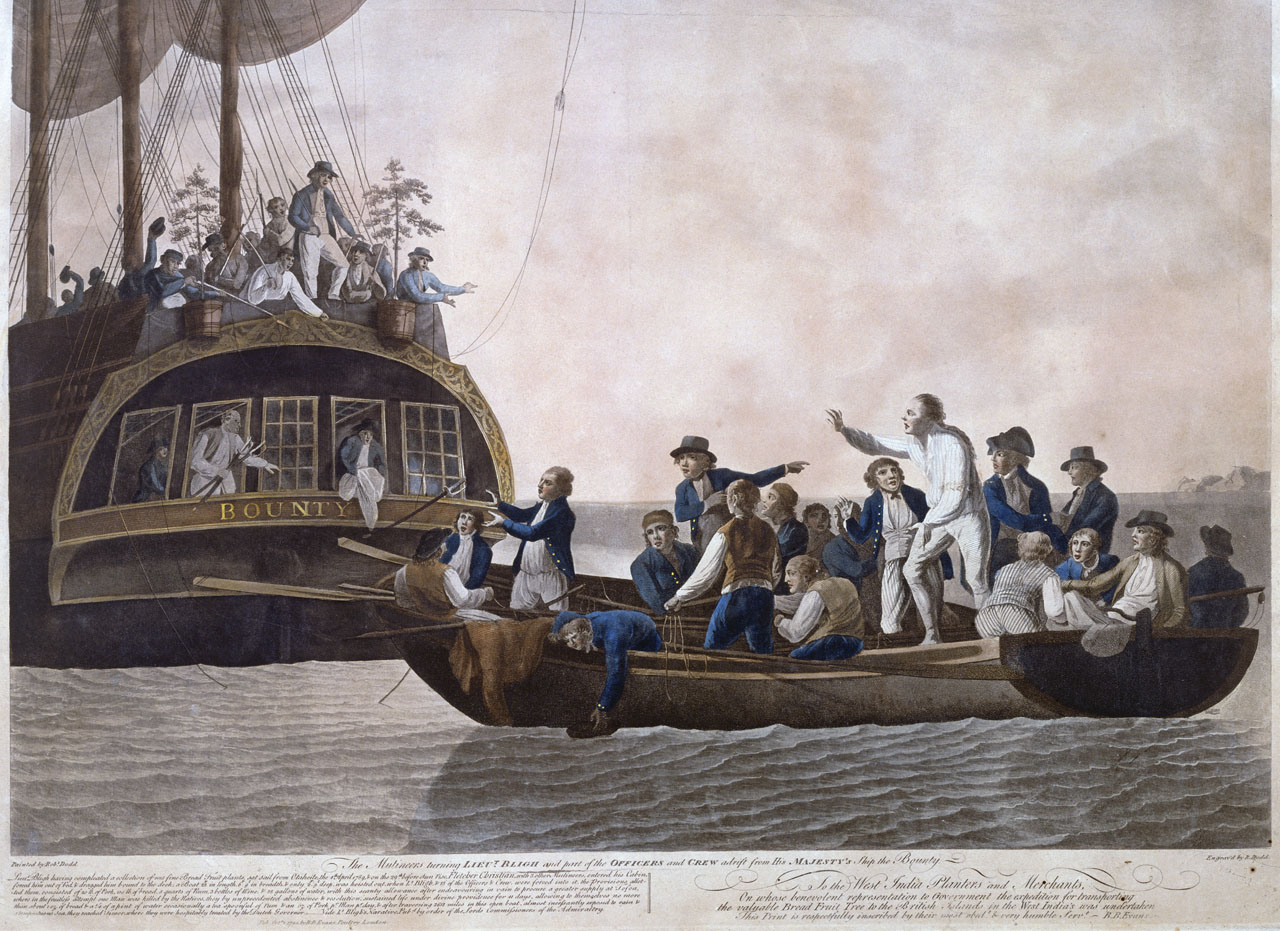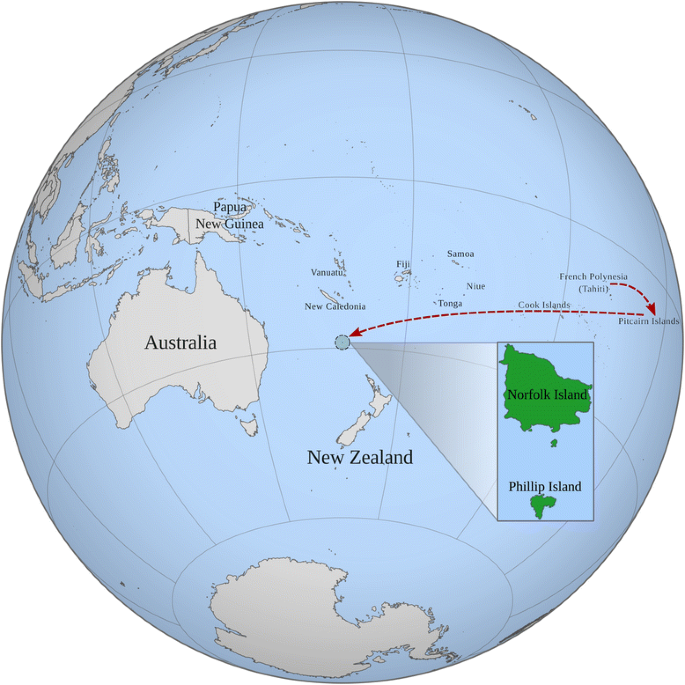Norfolk Island Historical & Genetic Background
Norfolk Island is located ~1400 km from the Australian East Coast. It was initially settled by seafaring Polynesians some time during the 13th Century CE and soon abandoned within 200 years. The island was then rediscovered in 1774 by Captain James Cook and used off and on as a British penal colony between 1788 and 1855.
In 1787, His Majesty’s Ship (HMS) Bounty departed England and set out for Tahiti with the goal of securing and distributing breadfruit for the slave trade. After an unexpectedly long stopover in Tahiti in 1789, the majority of the Bounty crew overthrew Captain William Bligh. Led by Lieutenant Fletcher Christian, 18 mutineers returned to Tahiti. Expecting to be discovered by the British, the mutineers then fled to the uninhabited Pitcairn Island, taking with them 12 Tahitian women and 8 Tahitian men.

Conflict and murder became rife on Pitcairn, leaving all Tahitian men and 7 mutineers dead. Slowly the island’s population grew, later bolstered by three additional male European settlers, who were the only outsiders to settle permanently on the island and subsequently married into the community.
Continual population growth and the concomitant pressure on resources led the British Government to allow the Pitcairn Islanders to settle Norfolk Island. On the 8th June 1856, a total of 193 inhabitants of Pitcairn Island were relocated there.

Today Norfolk Island has a population of about 2200 inhabitants, and approximately half of the permanent population are descendants of the Pitcairn founders. This unique ancestry presents a valuable opportunity for the investigation of complex human traits and diseases.